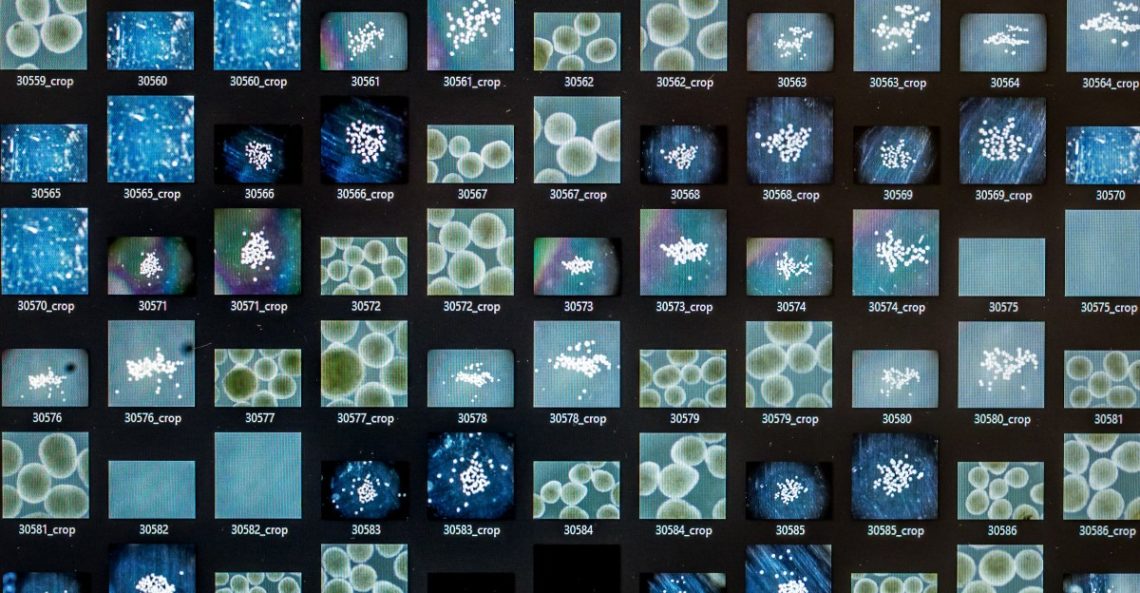They’re growing miniature 3D brains from stem cells. These aren’t your fictional mad scientists’ brains in a vat; they’re organoids, and they grow in petri dishes. They’re also incredibly cool.
We can, should, and will use cerebral organoids to discover new medical treatments, study brain development, reduce the demand for animal testing, and even power computers and more energy-efficient AI.
Lab-grown miniature brains may sound like sci-fi, but they’re totally real and happening right now. The Braingeneers team at the UC Santa Cruz Genomics Institute recently received a $1.9 million grant to study organoid intelligence — aka their ability to learn, respond to stimuli, and complete tasks. The brain organoids interact with the outside world through electrical and chemical signaling.
“These organoid models provide an unprecedented opportunity to probe the emergence of human cognitive capacity — a property that defines what makes us human,” Tal Sharf, a biomolecular engineering professor leading the research, said in a press release.
Braingeneers’ researchers will use reinforcement learning techniques — common in machine learning for tasks that require adaptability like driverless navigation — to discover how organoids can respond to sensory inputs to solve problems. Sharf’s team will create benchmarks for organoid intelligence to understand how they learn and monitor them for the possible emergence of consciousness.
That won’t be easy. There’s no universally agreed upon definition of consciousness, and it would be difficult to measure that state in what are very simplified tissues. We can’t exactly ask them how they’re feeling.
Such work, and even the existence of mini-brains, raises a host of ethical questions, especially as organoids become more sophisticated. The brain itself has no pain receptors, but our meninges – membranes around the brain – have neurons that can send pain signals to our grey matter. It’s possible that sufficiently advanced organoids could experience the same. If brain organoids can become conscious and experience pain, is it immoral to experiment on them?
These ethical questions are “just as exciting as the scientific and technological ones,” said Hank Greely, the director of the Center for Law and the Biosciences at Stanford University, in the press release. “They range from the status of the human brain organoid and, ultimately, an organoid computational device — should they be treated as human tissue samples, as lab animals, as persons, or something else entirely — to the details of the informed consent process for people whose cells are used to make these organoids.”
But consciousness is “very far down the line,” Jenny Tam, the director of synthetic biology at Harvard University’s Wyss Institute, told me. Although neurons in brain organoids “talk” with each other and work in synchronicity, that almost certainly doesn’t translate to consciousness in the current models. That researchers are seeing cells in these organoids make neural connections is incredibly cool, even if it doesn’t add up to consciousness.
“It excites the imagination,” Tam said, this question of, “What does it mean to be conscious?”
Most cerebral organoids represent only a single region of the brain. Johns Hopkins University researchers created a whole-brain organoid earlier this year, but it’s much smaller than the real deal, adding up to around 6 million neurons compared to the tens of billions in adult brains. That puts it at a similar level of development to a brain in a 40-day-old human fetus.
Their comparative simplicity belies the fact that brain organoids are an incredibly valuable tool for studying neurological disorders. Understanding how schizophrenia, Alzheimer’s disease, and bipolar disorder develops at a cellular level enables scientists to find better targets for treatments. Somewhere around 90 percent of all drugs fail during Phase 1 clinical trials. For neuropsychiatric medications, the failure rate is an astonishing 96 percent, according to Johns Hopkins researchers.
The failure rate is so high partially because neuroscience is incredibly hard, but the under-recognized reason lies with our reliance on animal testing. Researchers overwhelmingly use animal models, which don’t make for great test subjects for pharmaceuticals intended for humans, for early-stage drug development.
All of which complicates the ethical questions around brain organoids. We know for a fact that test animals experience pain. It seems much better to me to risk potential organoid suffering over animals definitely suffering — and for little to no medical benefit in the case of neuropsychiatric research.
But here’s something spooky: Using brain organoids to power computers blurs the line between humans and machines. So, get ready for renewed debate around AI consciousness, welfare, and maybe even personhood.
Happy Halloween!
The post The challenge of creating brains in a lab appeared first on Vox.




